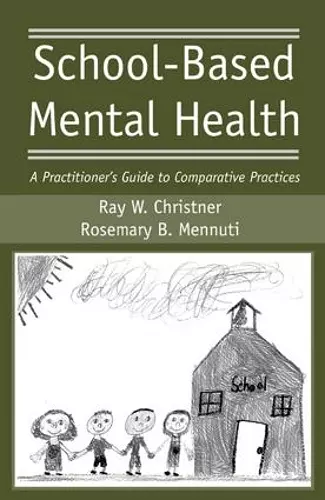School-Based Mental Health
A Practitioner's Guide to Comparative Practices
Rosemary B Mennuti author Ray W Christner author
Format:Hardback
Publisher:Taylor & Francis Ltd
Published:22nd Dec '08
Currently unavailable, and unfortunately no date known when it will be back

This volume provides school-based practitioners with a comprehensive and comparative guide to the strategic interventions, therapeutic modalities, and treatment approaches that are most commonly and effectively used in educational settings. Three main sections of the text present a foundation of universal interventions, targeted interventions, and alternative interventions appropriate for use in schools. Unifying the chapters are two central case examples, allowing the reader to see and evaluate the strengths and potential challenges of each technique in a familiar situation. This emphasis on case examples and the comparative structure of the volume will provide a level of hands-on and practical learning that is helpful for both students and mental health practitioners working in schools for the first time, and as a resource for more seasoned professionals who need to expand the tools at their disposal.
"School psychologists, clinical psychologists who practice in schools, school guidance counselors and community mental health providers would all benefit from this book [will be the main audiences.] I would suggest it could be used for classes in school psychology, clinical psychology and school-based mental health provider training programs in courses devoted to interventions in the schools. Depending on the focus of the class, it could be used as either a main or supplemental text. The current federal mandates for increases in student academic performance, for both students without and with special education provisions, are clear indicators that the market for such a book is growing. There is a federal mandate for supportive services regardless of "where the learner" is at. As a state consultant/trainer, I really like the case study approach the editors are intending to use. Utilizing this method, all contributors will have a common base upon which to "build their take" re: model of intervention. I would say it is a very "leading edge" approach and will be a very refreshing change from the typical book format which is a substitute for a lecture on a topic vs. an applied approach. Based on the overview provided, as well as my having reviewed their previous book, the editors’ writing style and intended reading level is very appropriate for the intended market. I recommend this book for publication. I do not currently teach a course, but would recommend it to others who do. I feel the case study format will be a very refreshing change from the typical book format which is a substitute for a lecture on a topic vs. an applied approach."
- Carl J. DiMartino, Ph.D., NCSP, President-Elect, National Association of School Psychologists
"I see the book being used in a number of introductory classes and field-based practicum classes. I see the main intention of the book as one to be used in pre-service university training for any mental health professional being trained to work in a school setting. This would include school psychologists, school counselors, and social workers. A secondary audience might be clinical psychologists in training or those making a transition into school-based mental health. Another secondary audience might be psychologists and social workers in private practice with a focus on school-age mental health. The need for more mental health services is growing as is the need for more professionals trained to work with such children. Another way to describe what we are seeing in public schools today is more clinical children entering school and more and more children on medication. So I think the market for such a text is growing depending on the nature of the text. Will the text cut to the chase, be user-friendly, and put theory into practice? Remember we are talking about pre-service training so we need a text that will connect with students and offer concrete examples and evidence based interventions. Generally I like the book’s proposed chapters. The material is timely and has a longer potential shelf-life if the authors offer "leading edge" approaches with making the readers connect with their particular therapeutic model. As an example, I know many practitioners who would love to learn play therapy with children but probably will never take a course dedicated to just play therapy. Thus, if the chapter offers the reader enough basic skills to begin and solid references for additional reading, the shelf-life is increased. An appendix with lots of forms that practitioners can copy is a good idea. Practitioners love forms. Overall, I think the book has a market and is consistent with current needs of providing more school-based mental health. It’s also in line with contemporary literature discussing the same issues. If designed as a text I would differently use the text if it were well written, not redundant, and had additional resources. I would use it as a supplementary text again if I thought my students could relate to the chapters and might find in useful in field-based classes."
- Jim Deni, Ed.D., Program Director, School Psychology Program, Appalachian State University
"This volume provides school-based practitioners with a comprehensive and comparative guide to the strategic interventions, therapeutic modalities, and treatment approaches that are most commonly and effectively used in educational settings...[The]emphasis on case examples and the comparative structure of the volume will provide a level of hands-on and practical learning that is helpful for both students and mental health practitioners working in schools for the first time, and as a resource for more seasoned professionals who need to expand the tools at their disposal." - Family Therapy
ISBN: 9780415955584
Dimensions: unknown
Weight: 1000g
456 pages